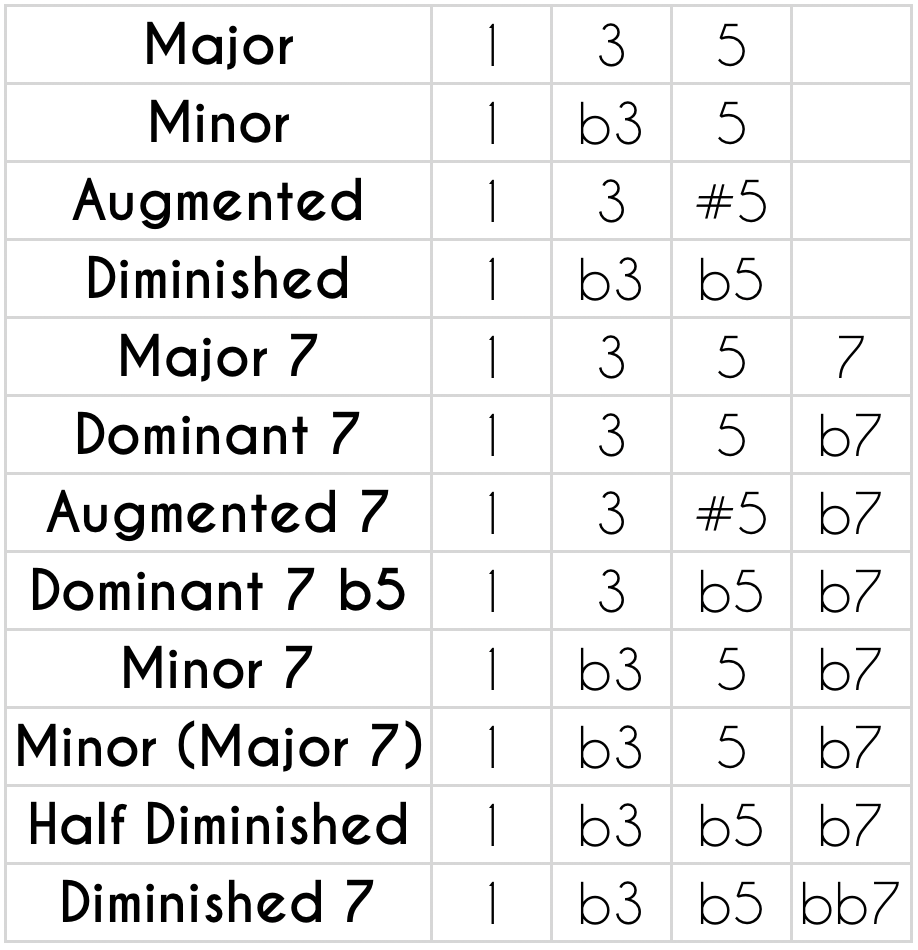How many different types of guitar chords are there? Chances are, you already know how to play a bunch of different chords. You have probably learnt how to play them by associating different shapes and fingerings with different chord names. But you’ve probably also come across some chord symbols that look like hieroglyphs and have wondered from time to time, what do all these symbols and add-ons actually mean?

That’s what we’re going to try to break down in this lesson. In some ways, ‘figuring out’ chords is relatively easy. There are some obvious applications of numbers and labels that happen. The B Major 6 chord, for example, is made up of the B Major chord, as well as the 6th note of the Major scale. But some labels are not as obvious.
This lesson is not for the faint-hearted. We are going to cover a lot. But by the end of it, you should have the ability (or at least a one-page reference guide) to figure out any chord that you come across. Before we go into too much detail though, we need to go back to the basics and start from there.





